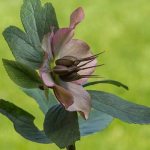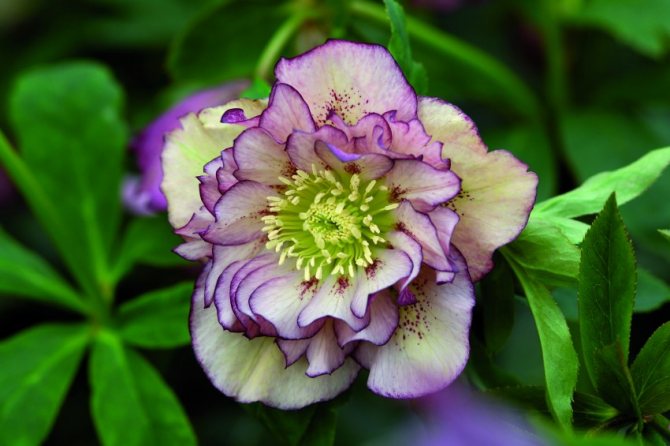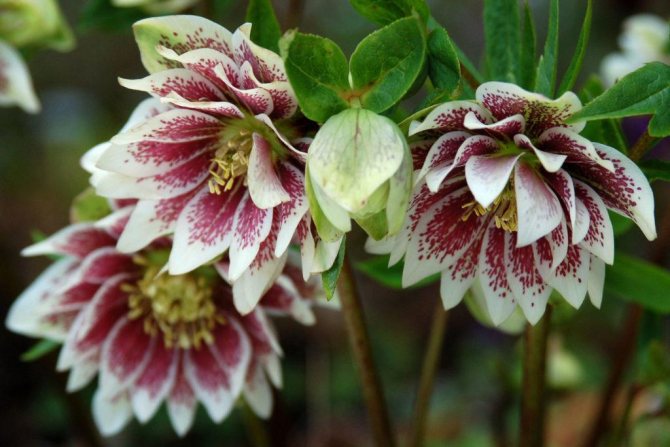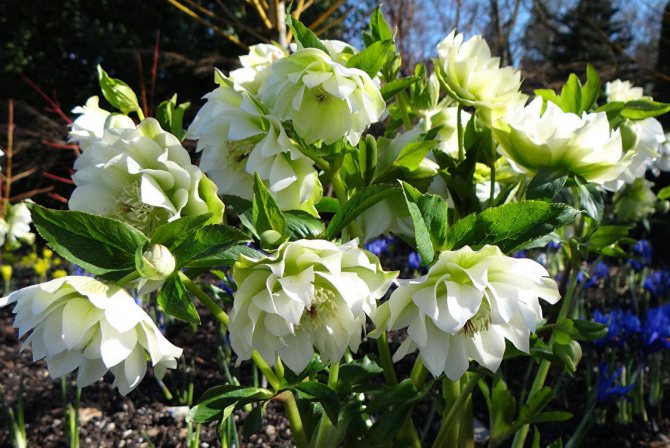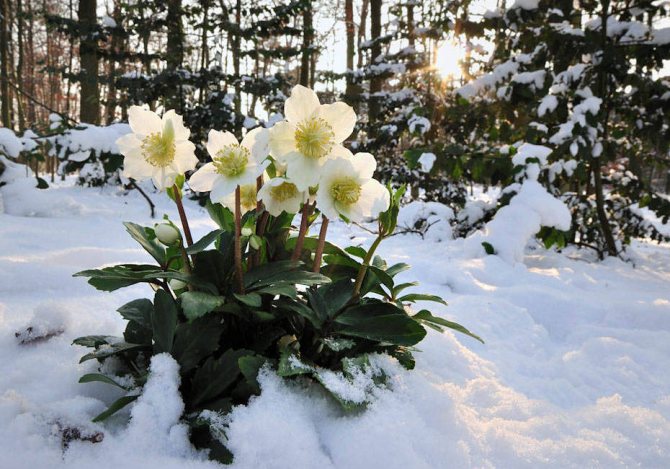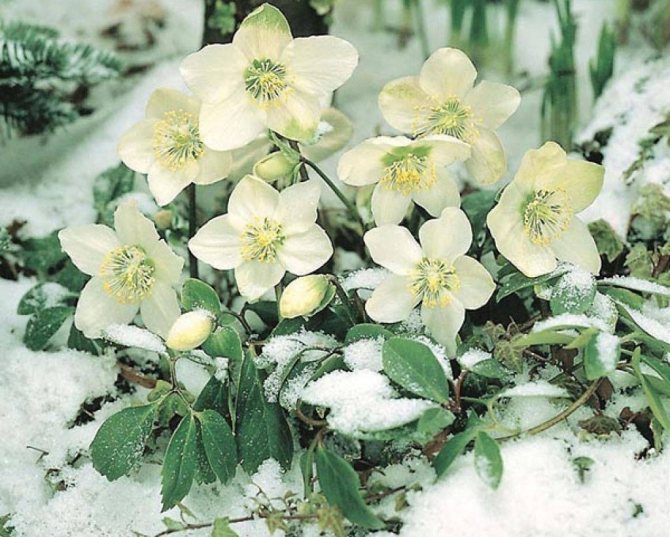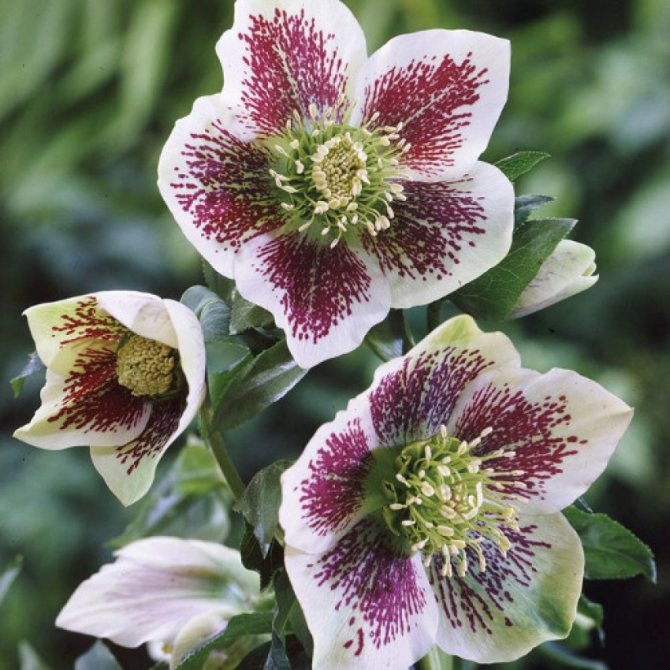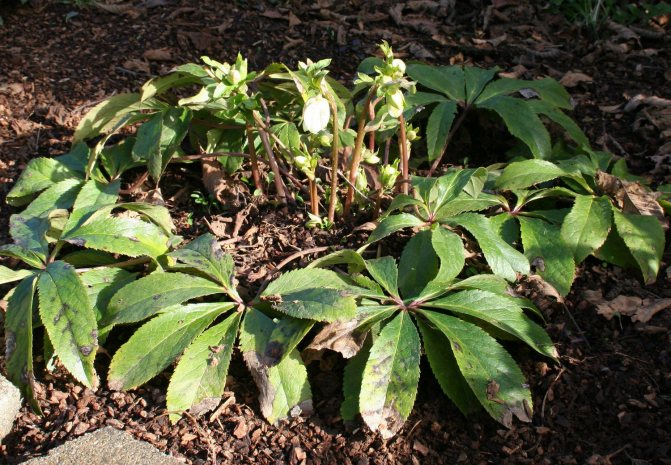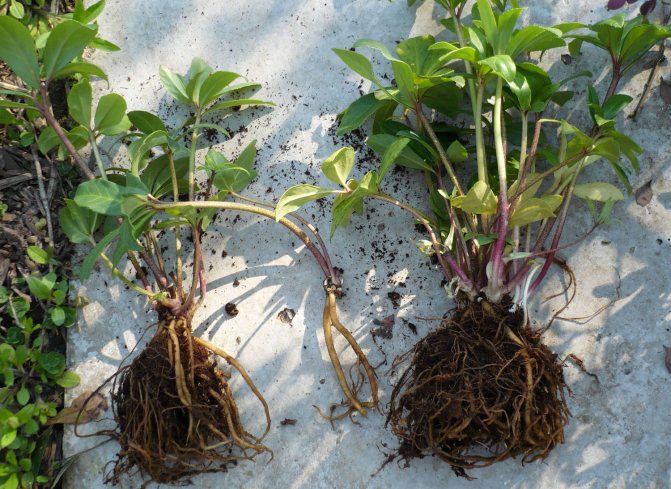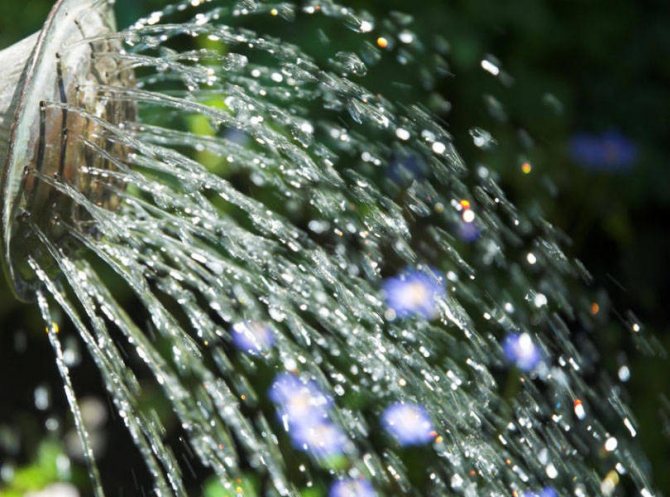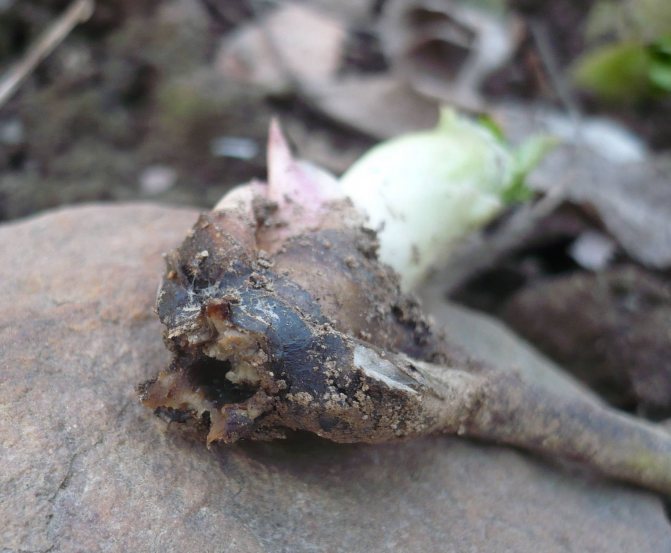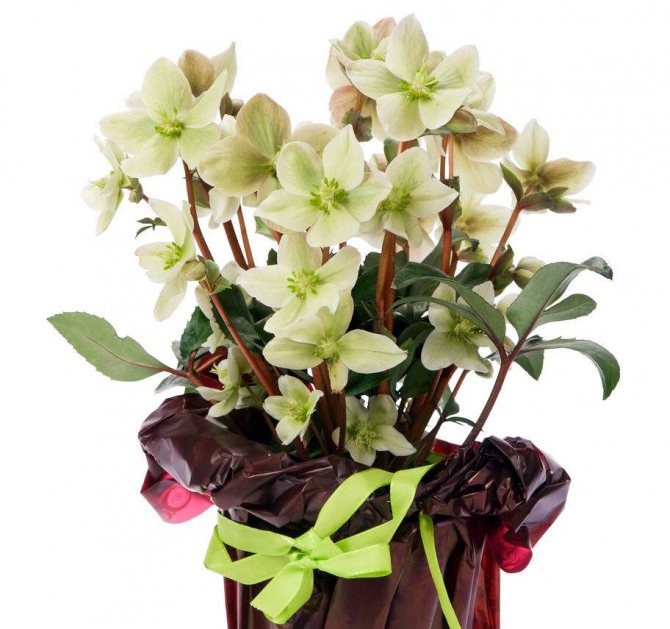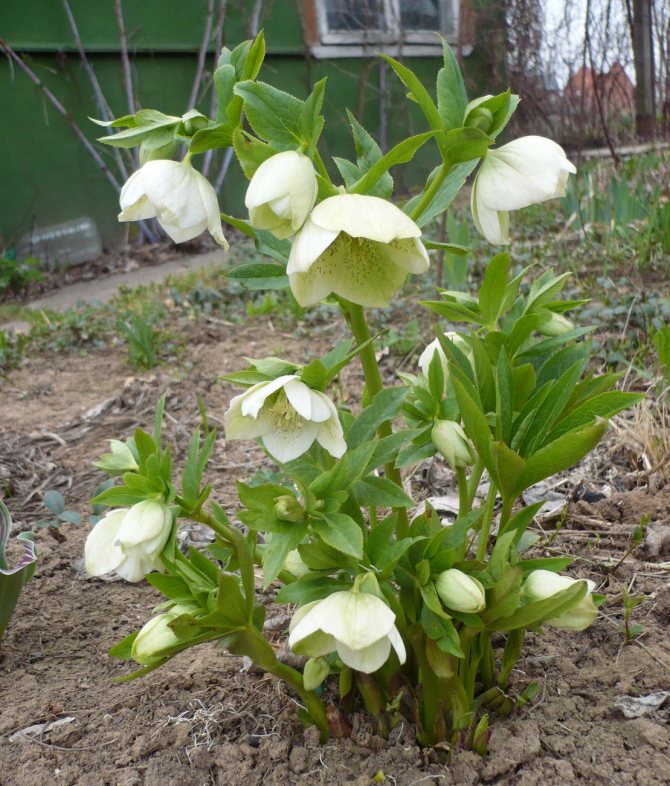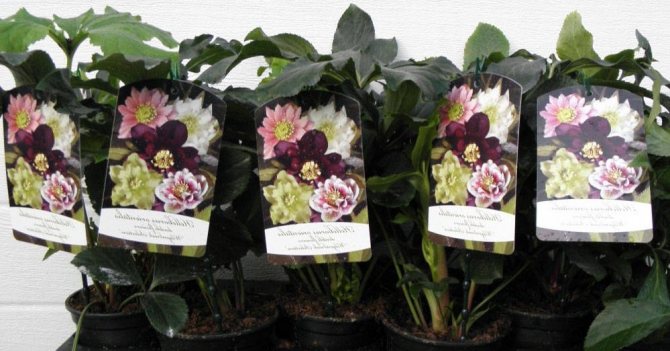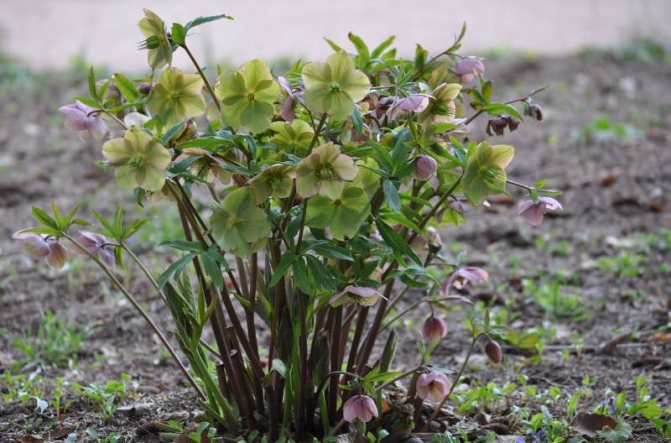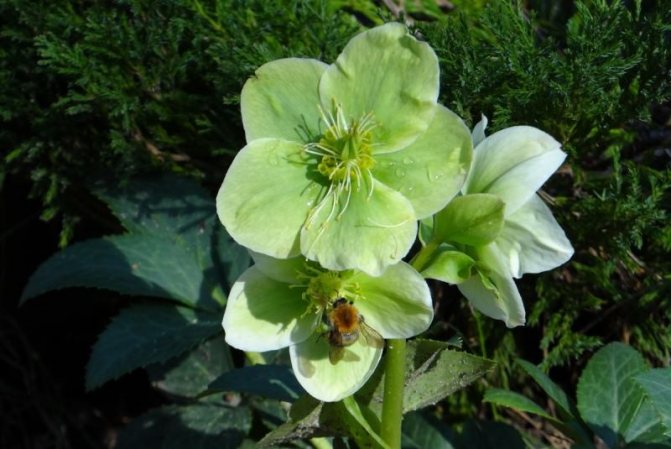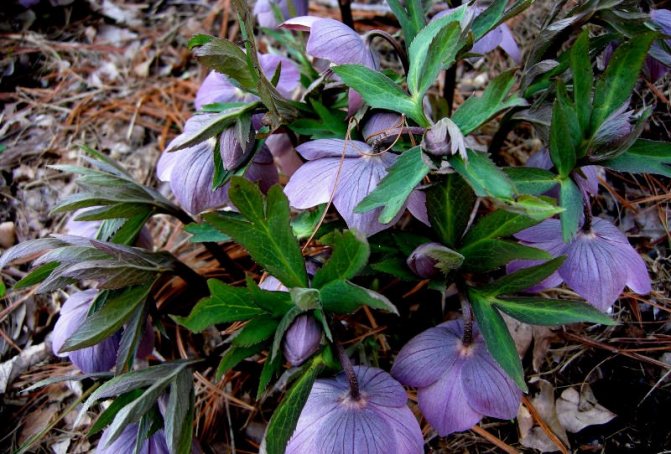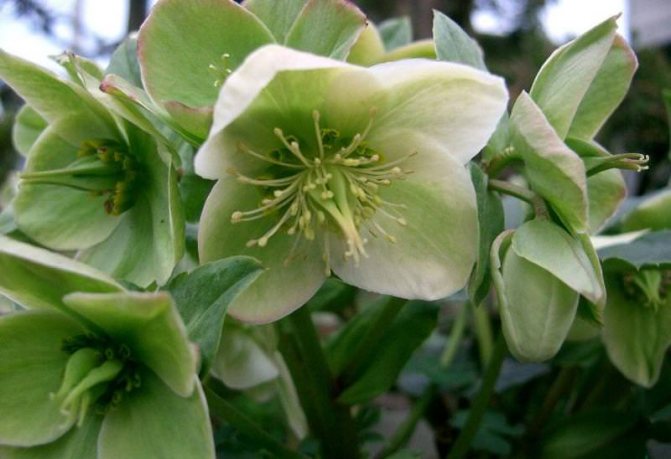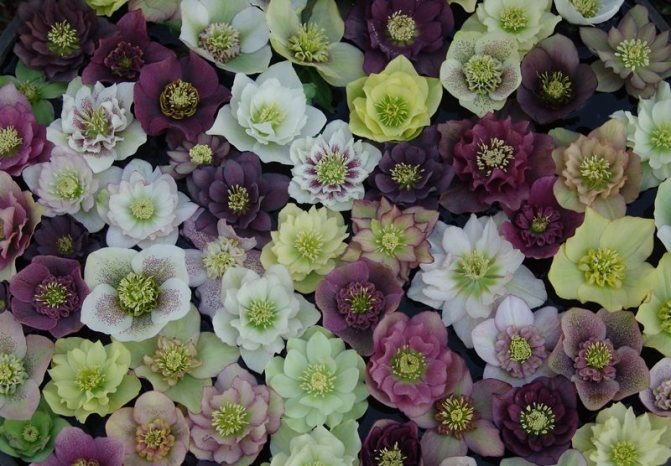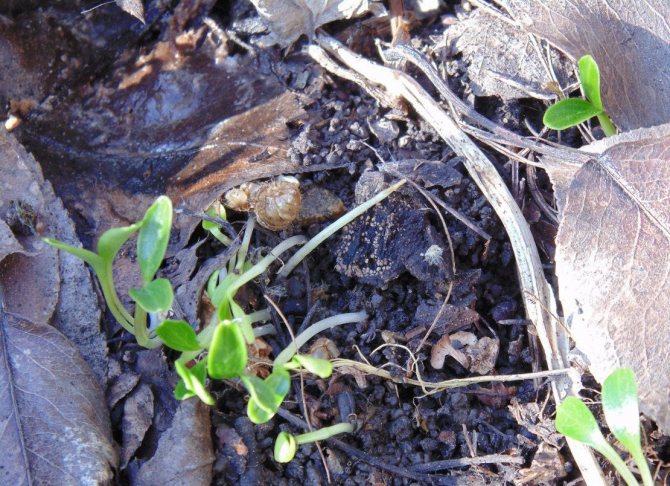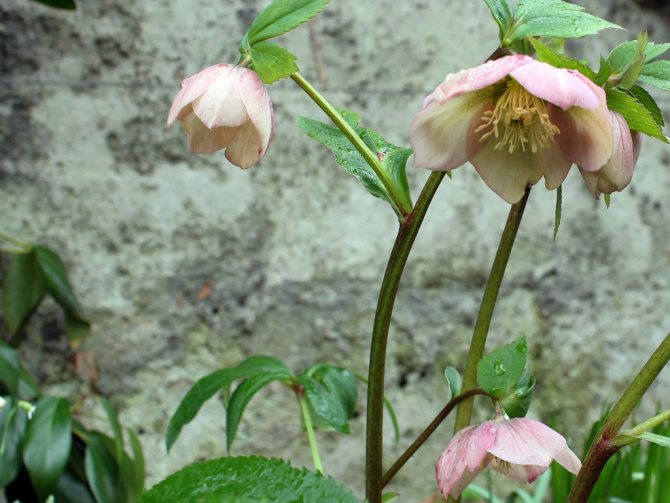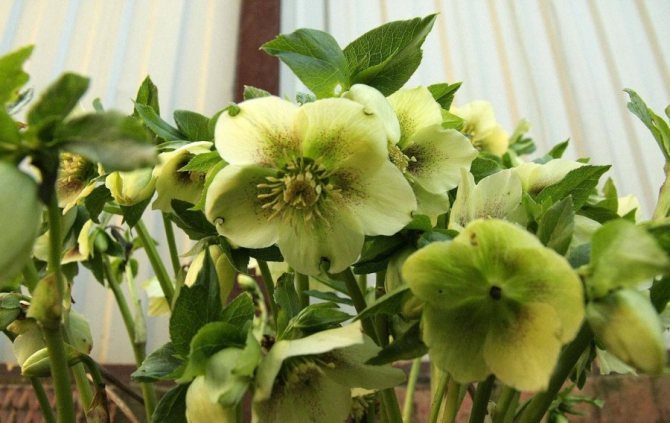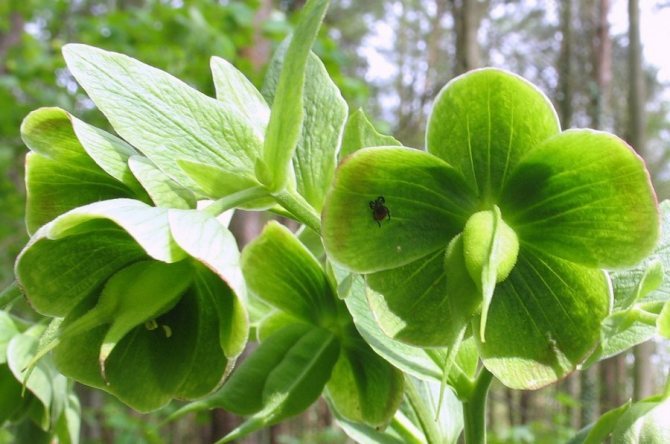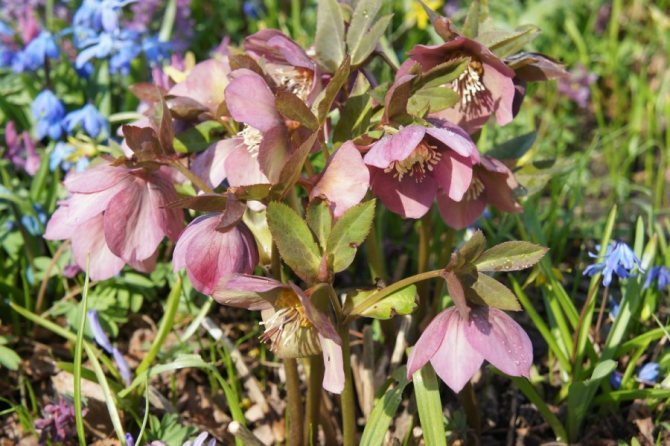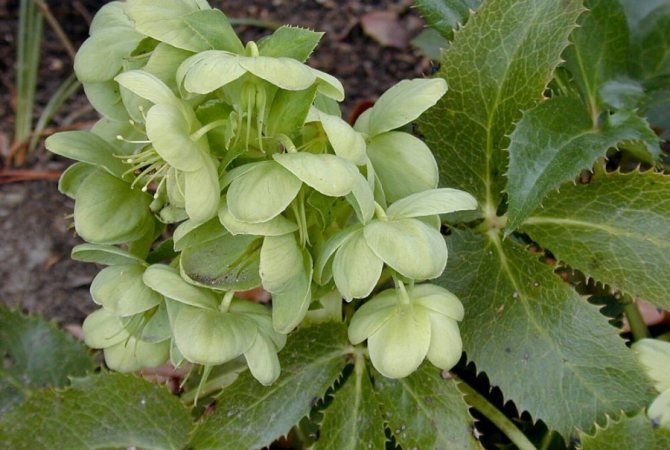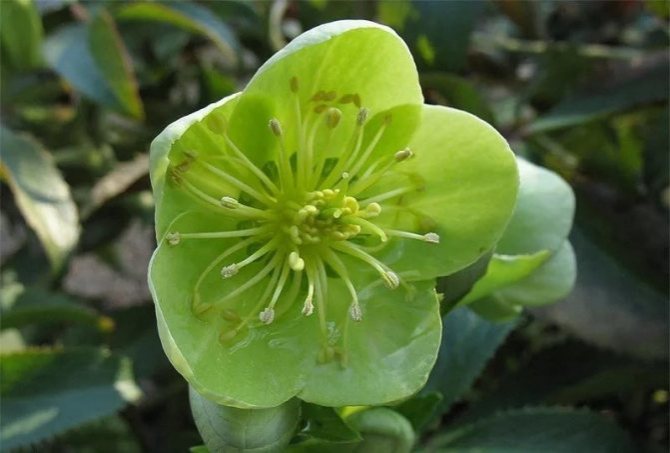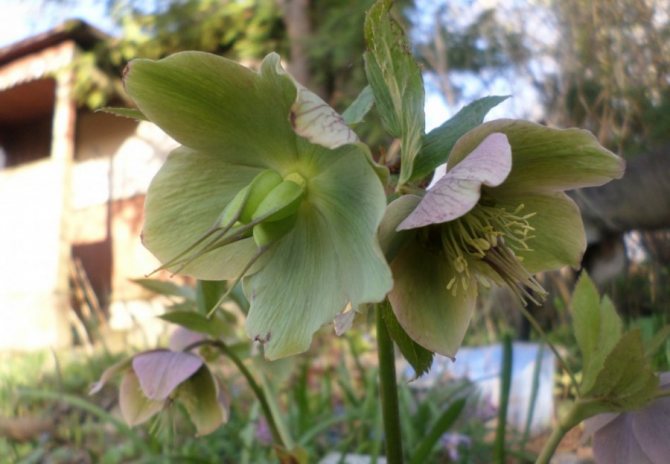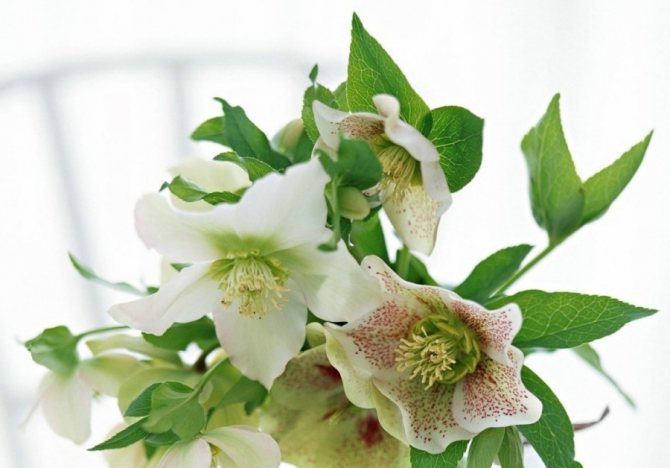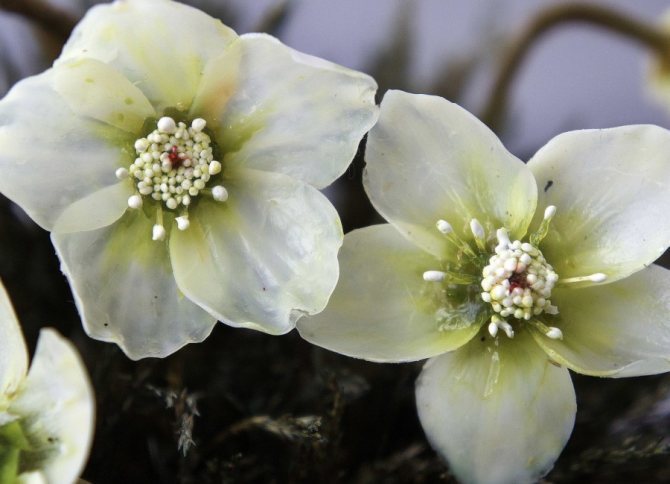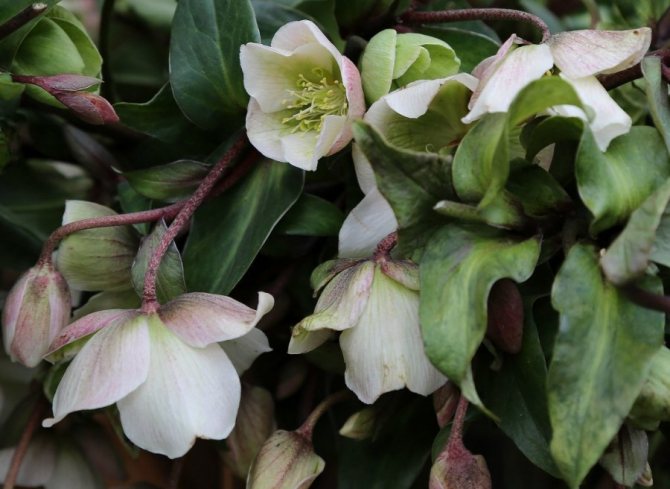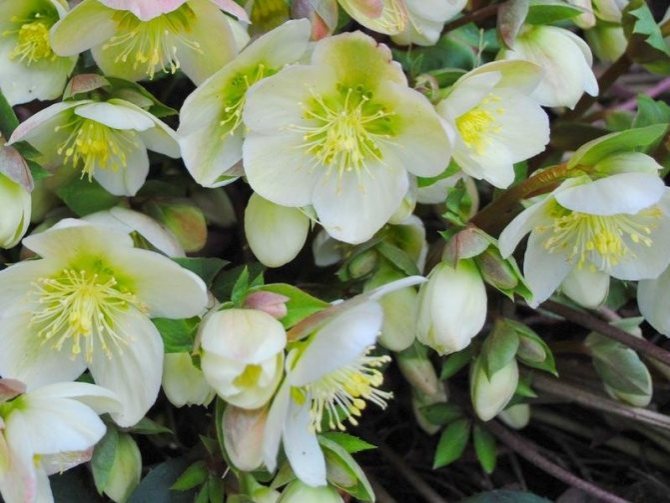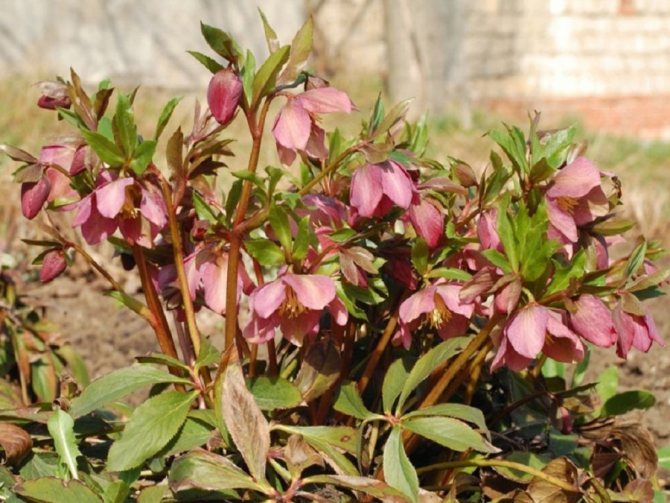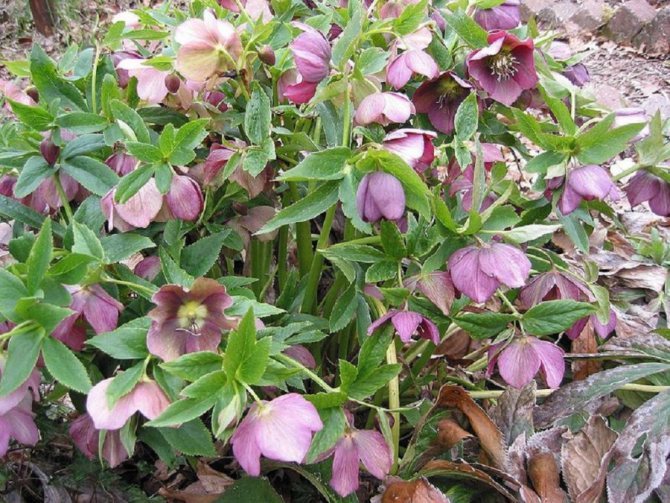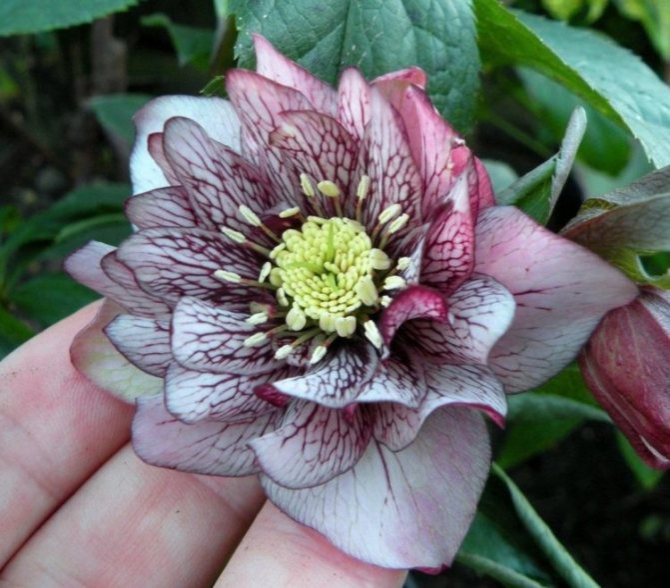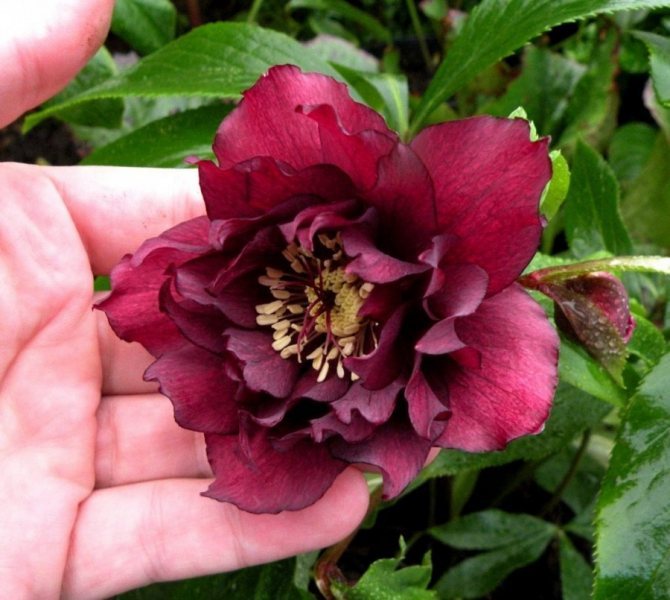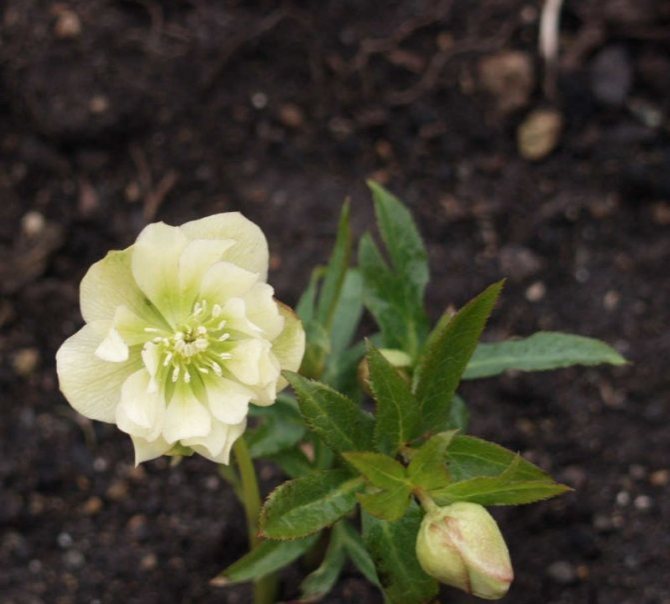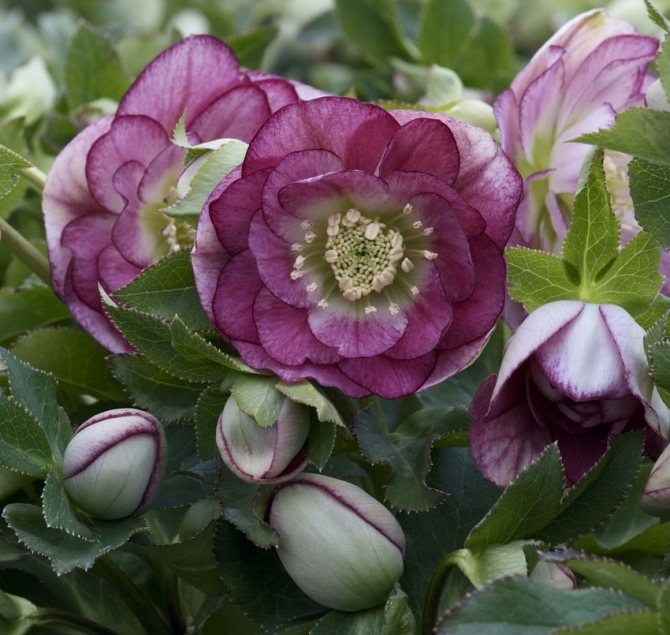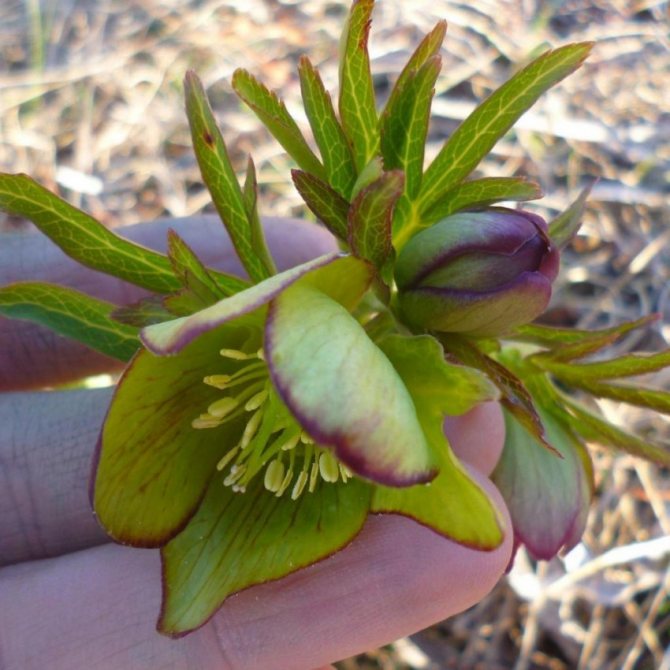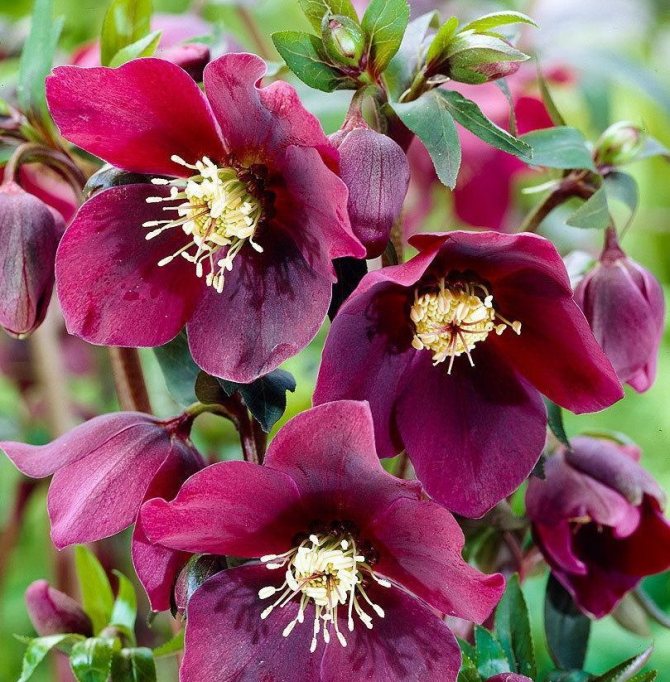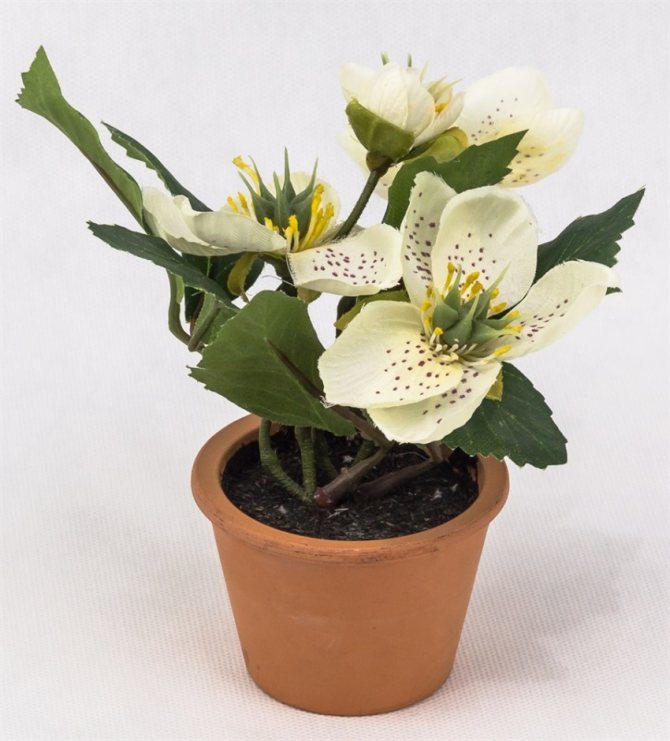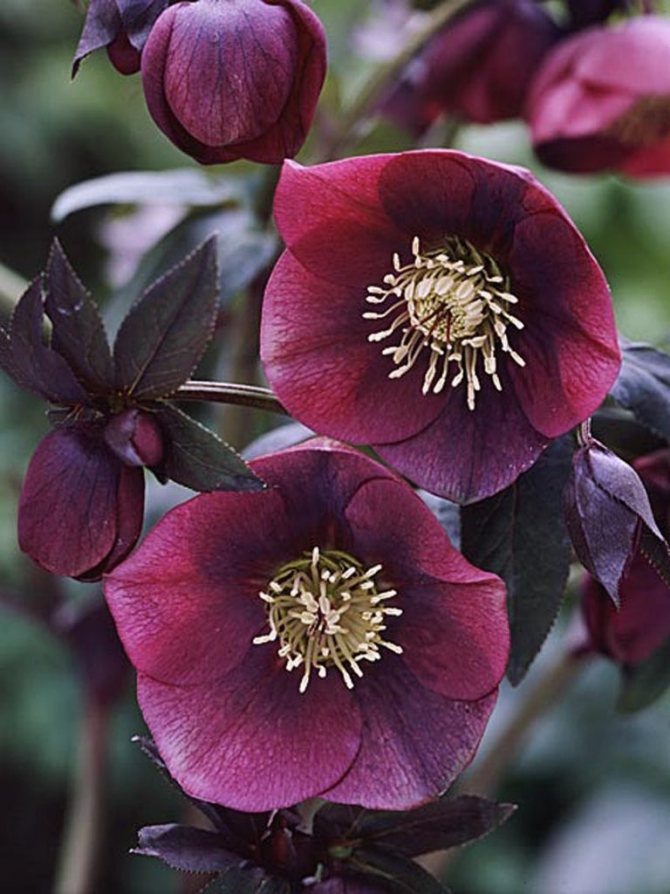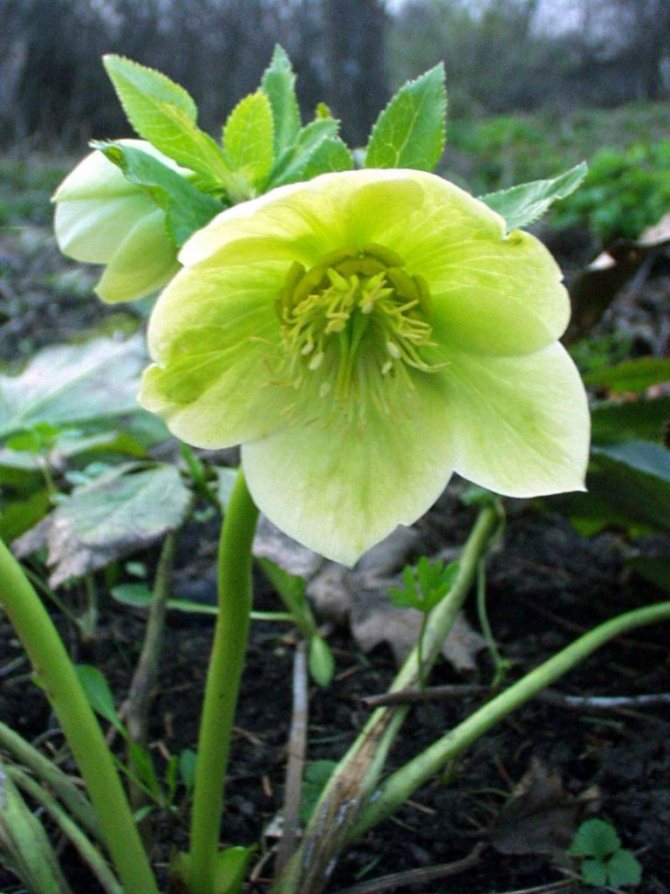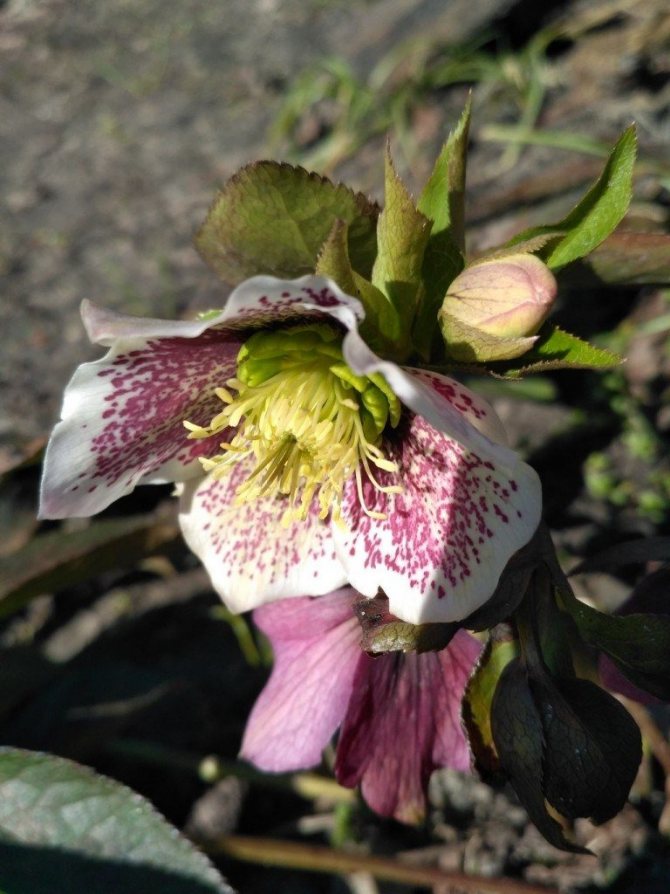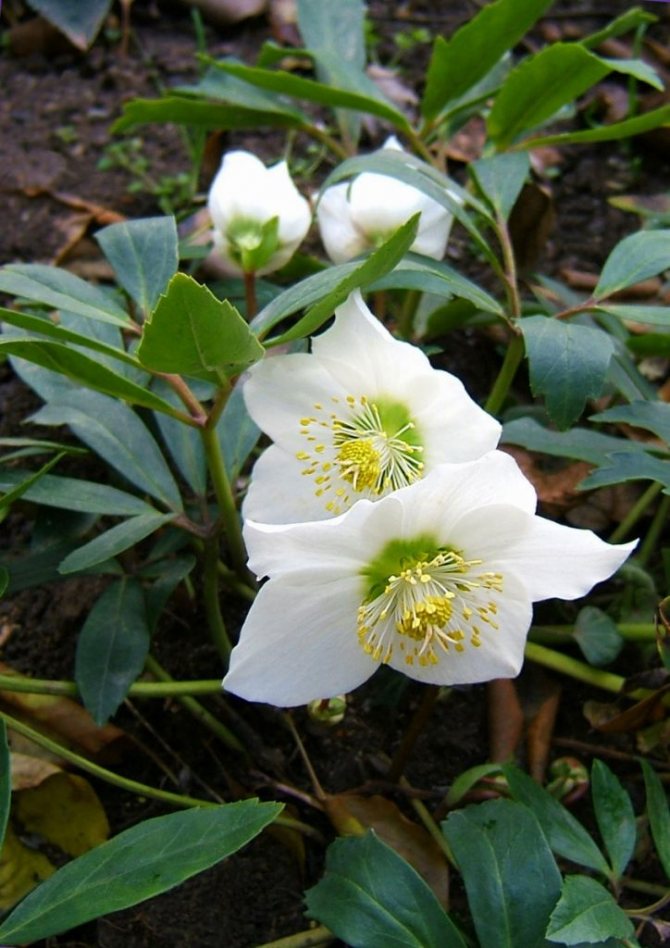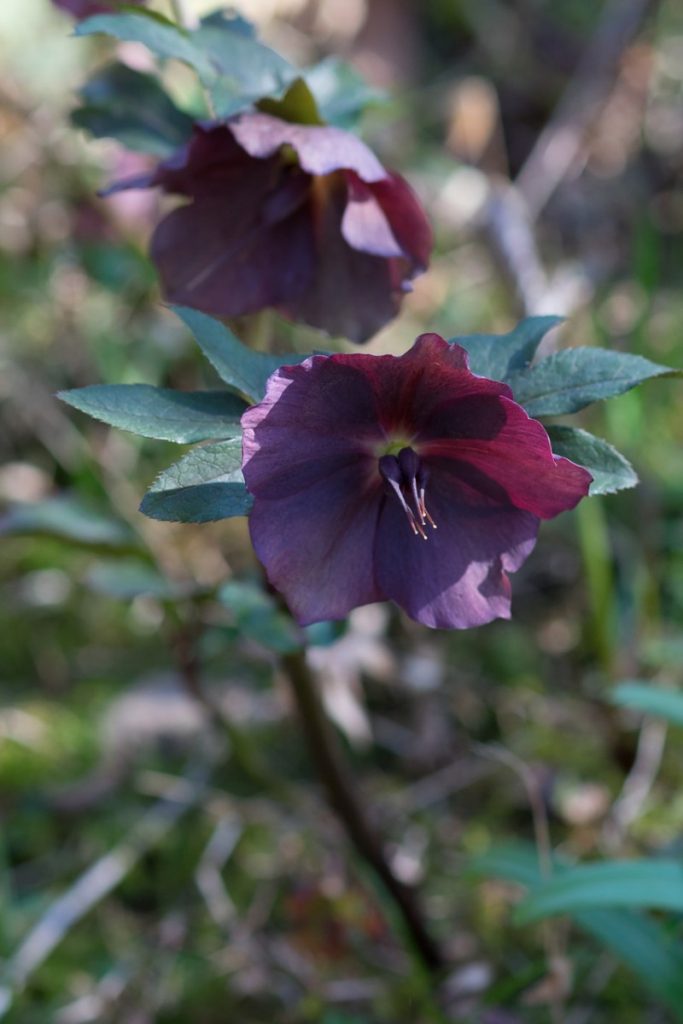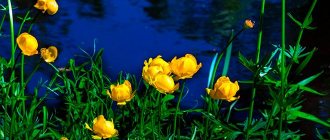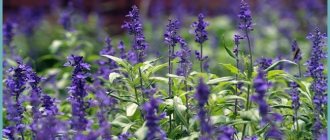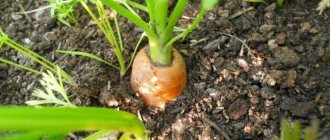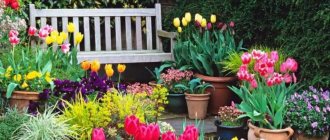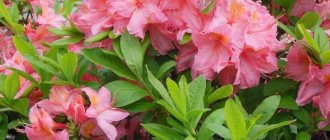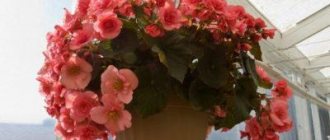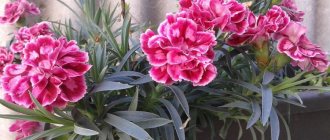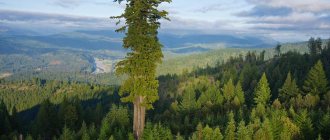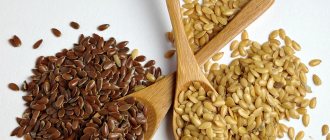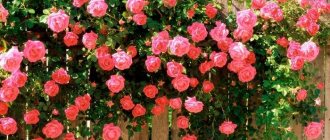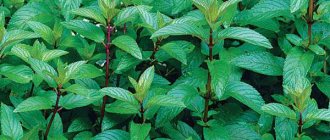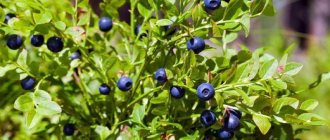Hellebore, the flower is unique. There are few garden flowers that combine unpretentiousness, usefulness and the ability to bloom among the snow. For this feature, the flower got its name. Although, this name is not the only one. There is a legend that says that a hellebore was among the gifts to the Christ child, and received the name "Christmas rose" or "Christ's flower". It is often called "Bear's Paw". In botany, it is known as "Gelleborus".
For some time, the plant lost its popularity, and left the flower beds of amateurs. He returned thanks to medicinal properties. For example, "Hellebore Caucasian" has gained fame as a means for losing weight and cleansing the body. But one nuance should be taken into account ...
Pay special attention! Be careful when growing this species. This type of hellebore is poisonous! You should not even try to prepare a medicine from it yourself. Yes, and its decorative qualities leave much to be desired, the Caucasian Hellebore blooms very nondescript. You should not risk in vain, there are other species of this plant, more beautiful and less dangerous.
3.Healing properties of hellebore
In folk medicine, Caucasian hellebore is used - this rare plant lives in the mountainous regions of the Caucasus and is listed in the Red Book. The flower has several other names - Christ's rose, Christmas rose, Caucasian winter house.
It is impossible to use this medicinal plant uncontrollably, it is poisonous and, if the dosage is exceeded or used for other purposes, it can cause serious poisoning.
The flower has many useful properties, including the ability to regulate heart activity, cleanse the body of toxins, remove excess bile, has a diuretic effect, a mild laxative effect, and therefore the herb is often used for weight loss. Plants are used to normalize blood sugar and regulate cholesterol levels, have an expectorant effect and are used in diseases of the upper respiratory tract, helps fight malignant tumors, has the ability to increase immunity, dulls hunger and suppresses appetite.
↑ Up,
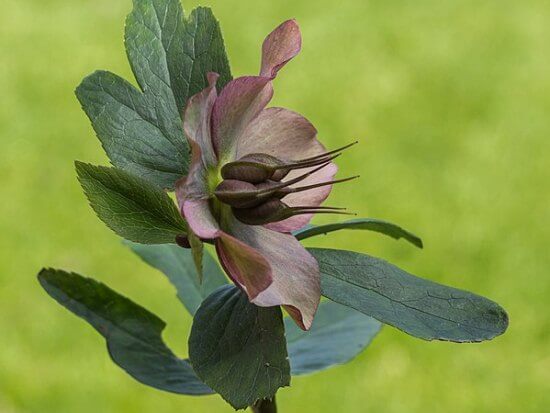
In order for the plants to retain the maximum amount of nutrients, they must be properly collected and processed. In folk medicine, the root system is used, the maximum amount of nutrients in which accumulates in the autumn, when the bushes will completely bloom and the fruits will ripen and fall off on them.
Since the roots of the hellebore contain many poisonous substances that easily evaporate during work and penetrate into the body when breathing, you should protect yourself with a respirator. before contact with plants.
↑ Up,
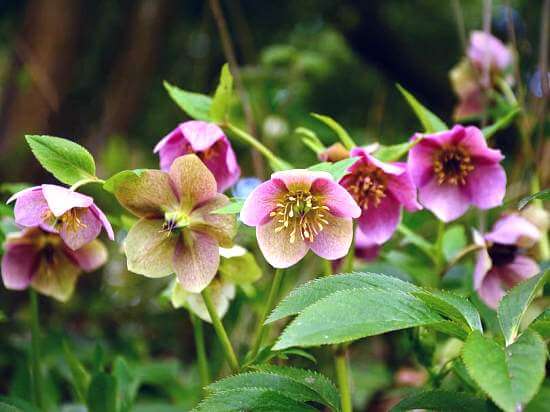

Hellebore bushes are dug up in the fall, and the entire ground part is cut off. The root system is thoroughly washed from the soil with running water and the old and rotten roots are cut off. Next, the roots are laid out on sheets of paper or pieces of cloth and placed in a dry, warm and ventilated room for drying. The raw materials should not be exposed to direct sunlight during drying.
You can also use special devices, but the temperature in them should not exceed 40 - 45 degrees.
Fully dried rhizomes are stored in a cool, dry place for 2 to 3 years in paper bags or canvas bags.
↑ Upward,
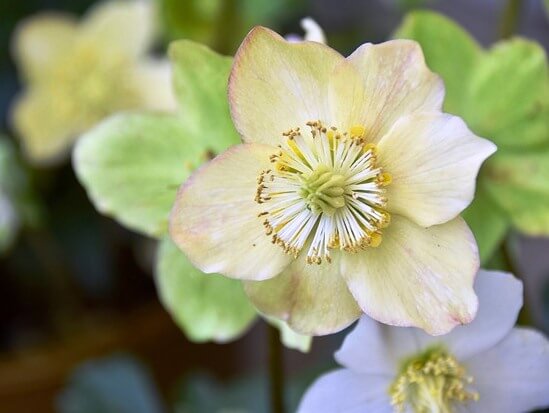

Growing methods
In the suburban areas of the Moscow region, flowers can be grown from seeds or by dividing a bush.
Popular types
The most popular types of hellebore are:
- "Hybrid",
- "The black",
- "Caucasian",
- "Smelly",
- "Reddish",
- "Corsican",
- "Abkhazian",
- "Oriental".
Most of them belong to evergreen or wintergreen crops. The "Black" and "Caucasian" hellebore is widely used in folk medicine. Decoctions, tinctures and powders based on flowers, leaves and roots help with many diseases, but official medicine warns against self-medication. The reason is that the hellebore belongs to the poisonous representatives of the flora and a self-prepared "medicine" can bring negative consequences.
4.Freezer - planting and care in the open field
A shaded place is suitable for a hellebore; it is better to plant a flower in the near-trunk circles of shrubs and trees - in early spring this location will just be in the lace shade, since the leaves on the trees have not yet blossomed.
Since the flower prefers soil with a neutral pH reaction, wood ash, crushed chalk or dolomite flour are first mixed into it.
In the soil poor in nutrients, it is worth adding a little organic matter - humus or well-rotted manure. If the earth is too dense and poorly permeable to moisture, then river sand is introduced into it in sufficient quantities.
↑ Upward,
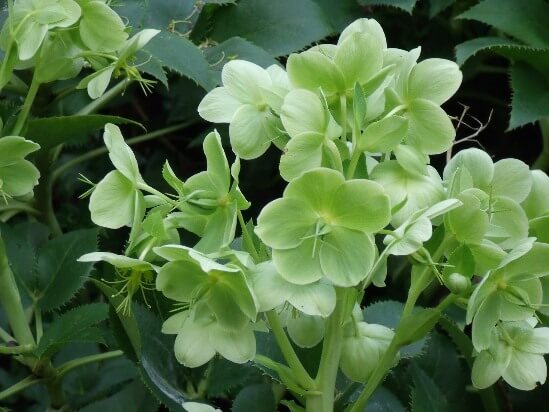

4.1 How and when to plant
In open ground, the hellebore can be planted 2 times a year - in April and September. The site is pre-dug up and weeded.
For growing a flower, planting holes are prepared so that several plants can be placed on a small site at once - hellebore looks better in group plantings. The width and depth of the planting holes should be approximately 1.5 - 2 times higher than the root ball of seedling bushes and can be about 30 cm.A nutrient layer of humus or cow and horse manure is placed on the bottom of the holes, its height can reach 5 - 7 cm.
↑ Upward,
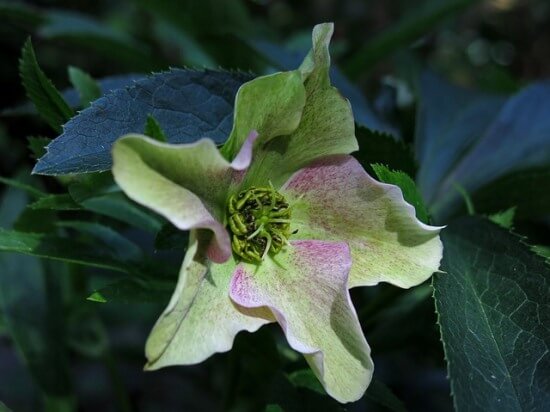

The bushes are placed in the holes and sprinkled with soil, tamping it slightly. After planting, a small layer of mulch, consisting of sawdust, straw or cut grass, is placed at the base of the plants. In the autumn months, flower bases can be mulched with fallen leaves.
The plantings are watered with plenty of water and in the first 3 to 4 weeks they keep the soil evenly moist. When the soil dries out, the bushes will not take root.
↑ Upward,
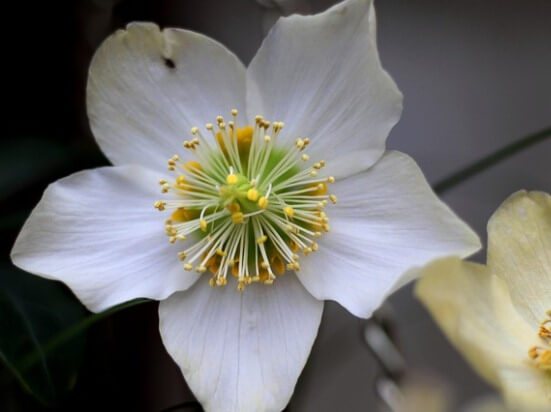

4.2 Caring for a flower in the garden
The hellebore is quite unpretentious - it is watered when the weather is dry enough for a long time. After watering, the soil around the plants is loosened and weeds are removed.
Two - three times per season, the flower is fed with mineral fertilizers for flowering plants with a high content of potassium and phosphorus, and bone meal is also added.
In early spring, in order to prevent the spread of fungal diseases, the leaves of the previous year are harvested. New leaf blades of the plant will form immediately after flowering.
Peduncles with wilting buds are cut with a sharp knife almost at the very base - this will not only help maintain a neat and attractive appearance, but also prevent unwanted self-seeding.
↑ Upward,
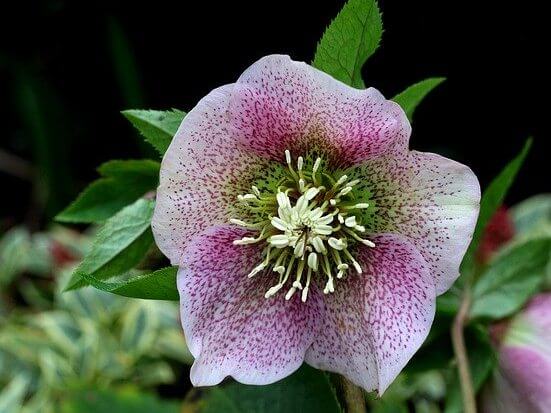

4.3. A hellebore in the fall - preparing for winter
In the conditions of the Middle Strip, the plants tolerate the winter well and do not need additional shelter. In more severe regions with little snow and severe frosts, plants should be prepared in advance for the cold season.
In the middle of autumn, before the onset of the first night frosts, the bushes are sprinkled, sprinkling a layer of soil to the roots and covered with a small layer of humus on top - it will help maintain heat. Pine or spruce branches or fallen dry foliage are thrown onto the site.
In the spring, the shelter must be removed as soon as the snow begins to melt.
↑ Upward,
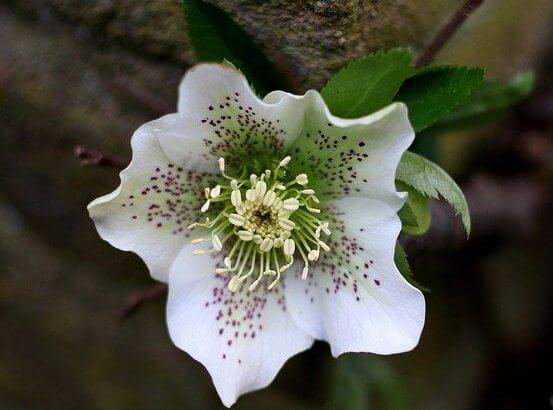

Planting a plant
Considering that hellebores are perennial plants and have been growing in one place without transplanting for many years, a place for planting a crop should be chosen in accordance with the requirements of agricultural technology.
Hellebores grow best on humus-rich soils, under tree crowns, where there is a lot of decayed foliage. The plant requires a shady location with little sunlight. Tree crowns that let in sunlight are the perfect neighborhood for a hellebore. The hellebore grows great when planting and caring for the plant is carried out correctly.
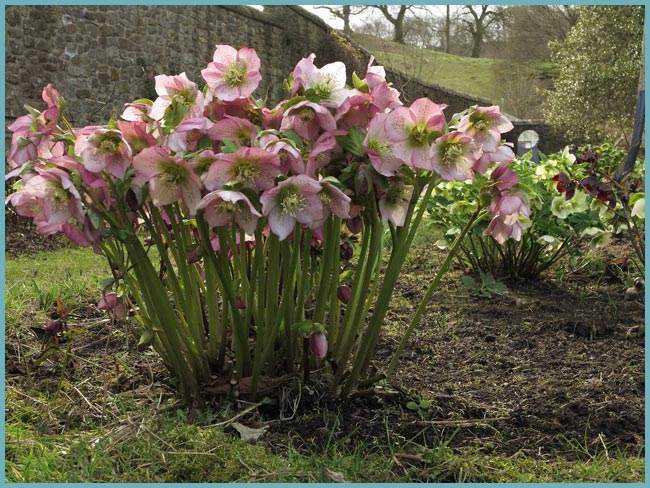

By choosing the right place for planting, you will ensure the annual active flowering of the perennial in your garden.
The soil for planting a plant must retain moisture: the hellebore cannot stand a lack of moisture. Care should be taken that the soil for planting the hellebore does not contain clay particles, is not caked and heavy.
Planting delenok or hellebore bushes is carried out in specially prepared shallow square pits (approximately 0.25 x 0.25 m). A distance of at least 0.3 m is maintained between the plants. Compost is added to the bottom of the pit. The roots of the hellebore are spread in a pit, sprinkled with soil on all sides, squeezed and abundantly watered. Within about 3 weeks from the day of planting the plants, abundant watering is required, while avoiding overflow and stagnation of water.
5. Reproduction, growing from seeds
The hellebore can be propagated in several ways - by division or by seed. The smelly hellebore reproduces well by sowing seeds and, when grown in the garden, often forms self-seeding.
↑ Upward,
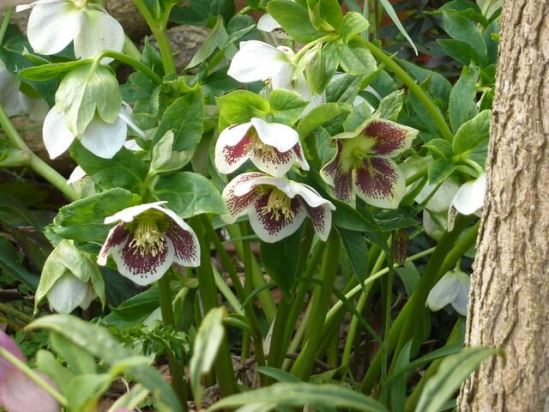

In open ground, hellebore seeds are sown in the summer - at the end of June - July, immediately after ripening and collection. You can use seeds collected with your own hands from plants.
To prevent cracked and fully open seed pods from spontaneously throwing seeds to the ground, they are tied with gauze in advance or a nylon sock is thrown over them.
The planting material is sorted out and dried for several hours in an open place without direct sun. At this time, they prepare a small area for sowing - they dig, weed and make grooves. About 15 cm is left between the grooves.
Seeds are laid out at a distance of 3-4 cm, covered with soil about 1.5 cm thick and watered abundantly. It is not difficult to distribute the seeds evenly - they are quite large.
↑ Upward,
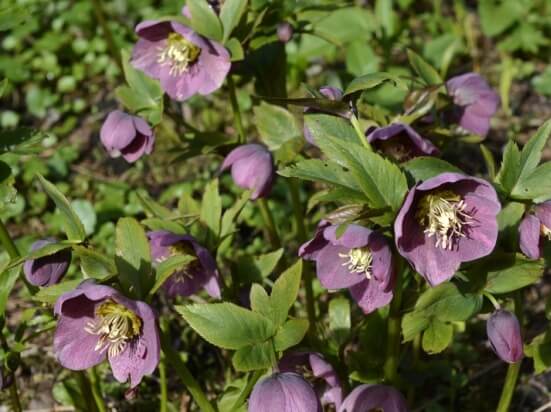

The first shoots from seeds will appear only in early spring. When each bush can boast 2 - 3 real leaves, they dive - they transfer the plants from a kind of "kindergarten", where they will spend another 2 - 3 years.
At the age of 3-4 years, hellebores are planted in a permanent place, and only 3 years after planting, the first buds are expected to appear.
Sowing seeds when grown at home, they are carried out in the spring, in moist, nutritious soil. Preliminary their stratify in the refrigerator for two to three weeks.
The container with seedlings must be covered with glass or a plastic cap to maintain uniform humidity. Subject to the rules of agricultural technology, seedlings germination takes from two to twenty-five weeks, depending on the type and time of planting.
↑ Upward,
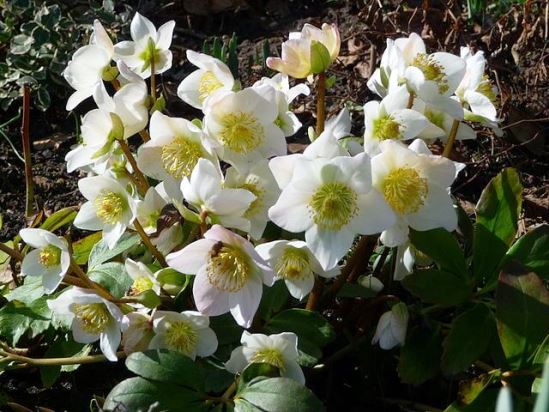

5.1 Division of large plants
Adult hellebores aged 5 or more can be divided into parts during transplantation, this will rejuvenate the bushes. Division is usually carried out after full flowering - in the second half of summer. The eastern hellebore is divided in the fall, and the black hellebore in early spring, before the buds form.
Plants dig up and shake off the rhizomes from the remains of the soil. The roots are examined and, by trimming, old and rotten tips are removed by trimming them to healthy tissue.
↑ Upward,
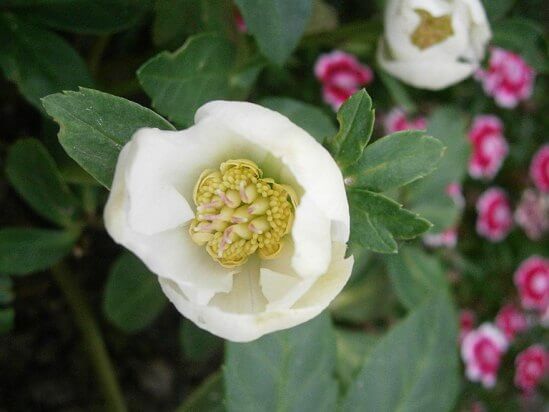

The rhizomes are cut into pieces with a garden knife or sterilized secateurs. Make sure that each plant you separate has a well-developed root system and green mass.
The wound surface resulting from division is treated with charcoal powder or wood ash for drying and disinfection. Further, the delenki are planted in a permanent place.
↑ Upward,
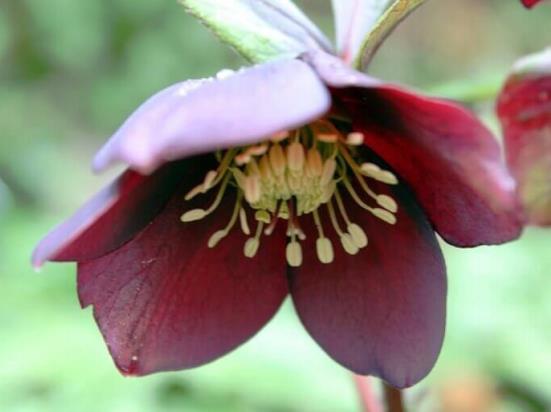

Types and varieties
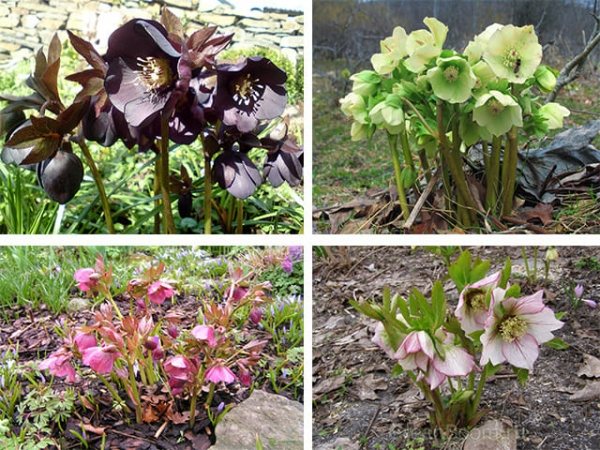

The hellebore flower is cold-resistant. However, young bushes cover in the early years. In this case, it will bloom profusely in the spring. Several varieties of this herb can be found on the market. It:
- Black ranks first in beauty. The bush reaches 35 cm. Its flowers are large with many stamens. It dissolves at the end of March for almost 2 weeks. This variety is not afraid of real frosts and does not require shelter even at -36C.
- Caucasian differs from other varieties. Its foliage reaches 16 cm, flowers - 9 cm. The buds bloom for the May holidays, the inflorescences last until mid-June. The variety is recognized as the most poisonous.
- Abkhazian is a bush with long leaves. Their color ranges from violet-green to dark green. Flower stalks are decorated with red-purple colors. Their length reaches 34-45 cm. The flowering period occurs in the last week of March.
- The oriental has purple flowers. Irregular foliage, often exposed to fungal infections. This type includes varieties: Rock and Roll, White Swan, Leidy Series Hybrid.
- Smelly is one of the big ones. The leaves are narrow. The peduncle stretches 85 cm, at the end of which a lush inflorescence opens. It consists of flowers of small diameter, reminiscent of the classic version of bells. The color is green with an uneven edging of a brown-red scale. Differs in a high degree of survival. He is not afraid of prolonged droughts. The variety is popular in horticultural circles - Vester Flisk.
- The Corsican easily reaches 80 cm in height. The color of the petals borders on natural beauty and uniqueness - green-yellow, cupped shapes form brushes of incredible sizes. The most famous representative is usually called the Grunspecht variety.
- Reddish also refers to poisonous. The color is saturated - purple-violet. The inflorescences themselves emit a very unpleasant aroma.
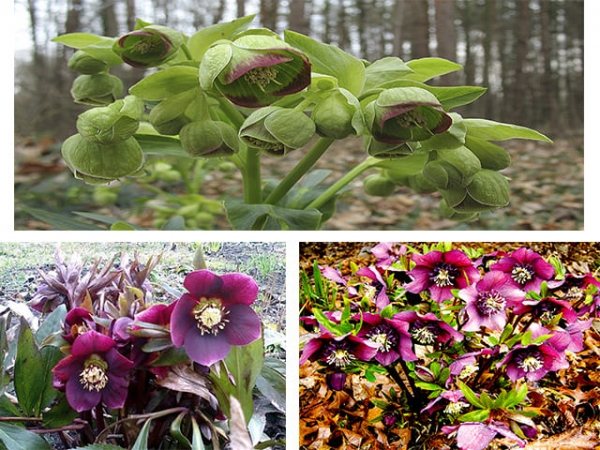

6 transplant
The hellebore has many small roots that are easily damaged - transplant it only if necessary, in spring, before flowering or immediately after it, when the plant becomes cramped in the pot or the soil should be changed to fresh.
When grown outdoors, the flower can do without transplanting for a long time - about 10 years. It is better not to move the plant without special need - it does not like transplants.
↑ Upward,
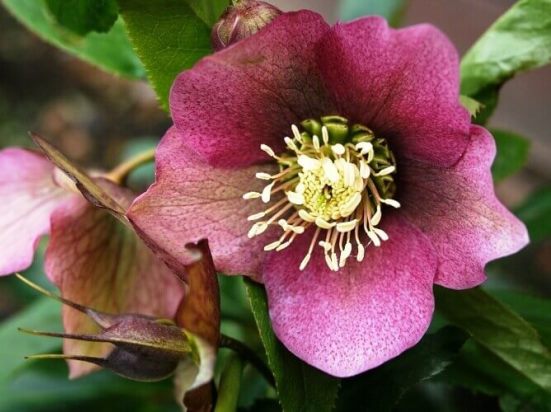

Diseases
The greenery and roots contain toxic substances with bactericidal properties. Therefore, diseases and pests are practically not scary.
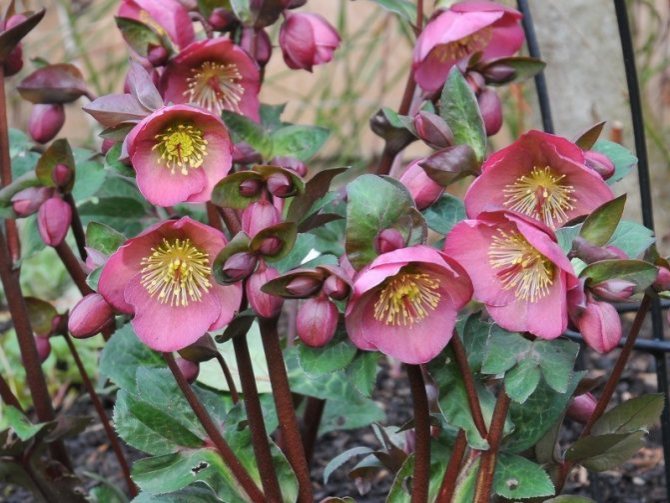

Most of the pathologies that arise are associated with weather or human factors. In areas with high humidity, cases of infection with a fungus are occasionally noted.


The problem is easily solved by timely removal of diseased leaves.
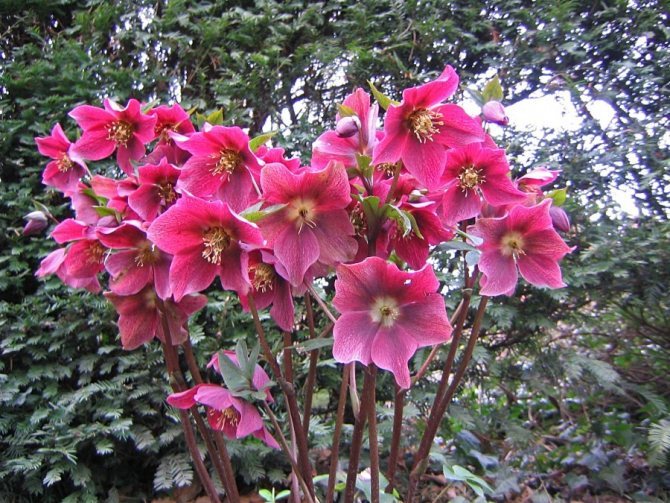

Do not let children come into contact with the sap from the stem.
8 frostbite - growing and caring at home
Hellebore enough unpretentious, but also when growing it, it is necessary to observe certain agricultural techniques. It can be grown outdoors in the warm season, but hellebore prefers sheltered places from the wind. Remove old foliage and wilted flowers in time.
↑ Upward,
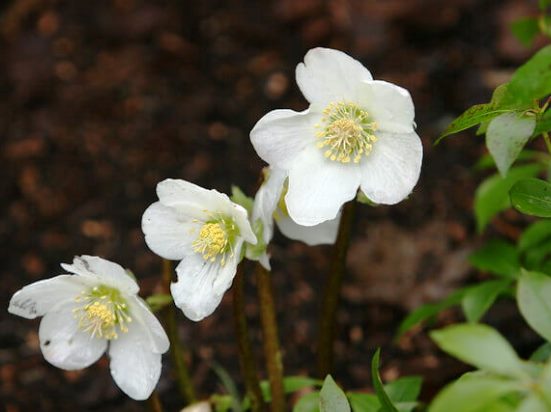

8.1 Soil
Prefers well-drained, fertile soil rich in organic matter with neutral or slightly alkaline pH.
↑ Upward,
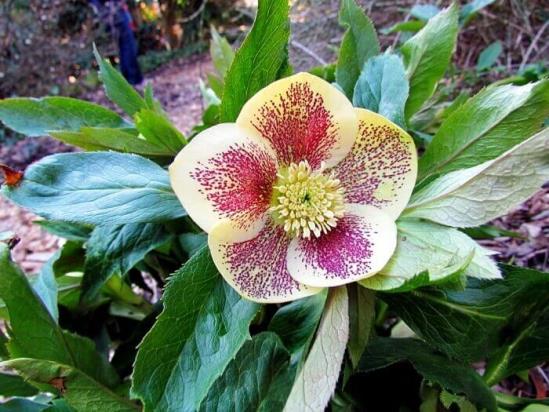

8.2 Top dressing
A hellebore in a pot is fed only during the growing season liquid fertilizers at half concentration every 2 weeks.
↑ Up,
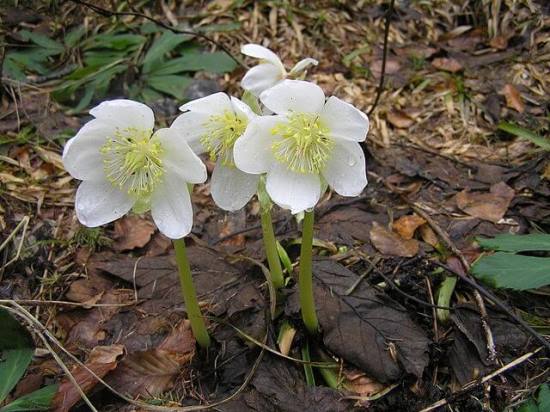

8.3 Containment Procedures - Temperature
Prefers cool content at temperature from 7 to 18 ° С.
↑ Up,
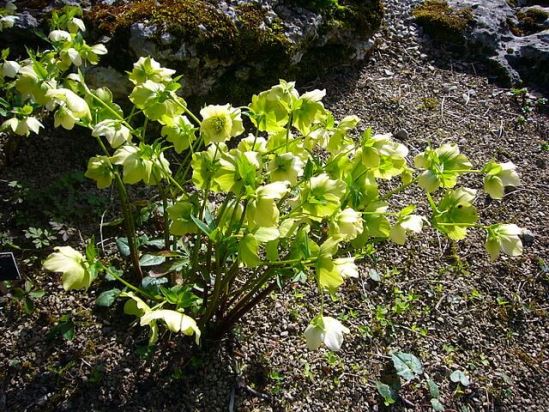

8.4 Lighting
A certain amount of direct sunlight can fall on the plant in the morning and evening hours, but not on a hot summer day. Some species are extremely shade-tolerant, but good lighting more often it allows you to grow a strong, abundantly flowering plant.
↑ Up,
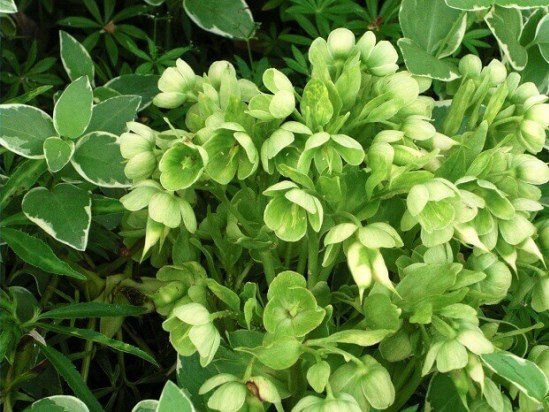

8.5 Watering
Should water regularly, especially during the first growing season, in order to obtain a deep, extensive root system. The soil must not dry out. Reduce the frequency of watering after flowering. Avoid wet, poorly drained soil, especially during winter.
↑ Up,
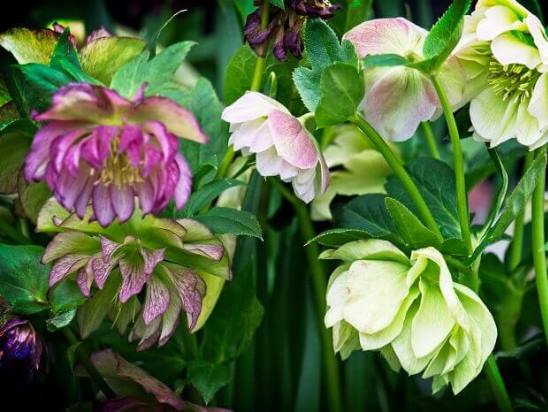

8.6 Spraying
An unpretentious plant that tolerates enough dry room air. Does not need spraying.
↑ Up,
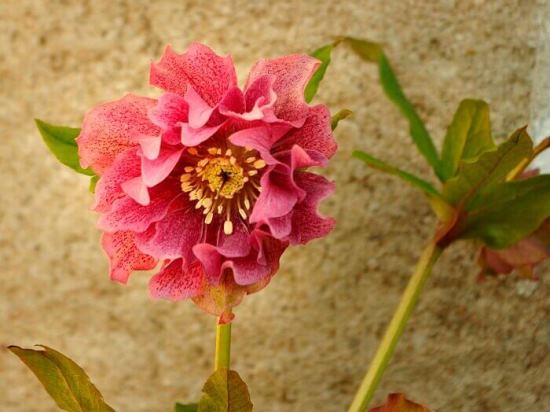

Features of the
It is not entirely correct to consider the hellebore a grass, because even in appearance it looks more like a flower, moreover, it is quite attractive. But do not be too careless when you see it, because the flowers of this plant are poisonous, and can be used for medicinal purposes at the exact dosage, which should be prescribed by a qualified doctor.
Visually, hellebore plants may differ slightly from each other, but this difference will only be in size, which can vary from twenty centimeters in height to half a meter.
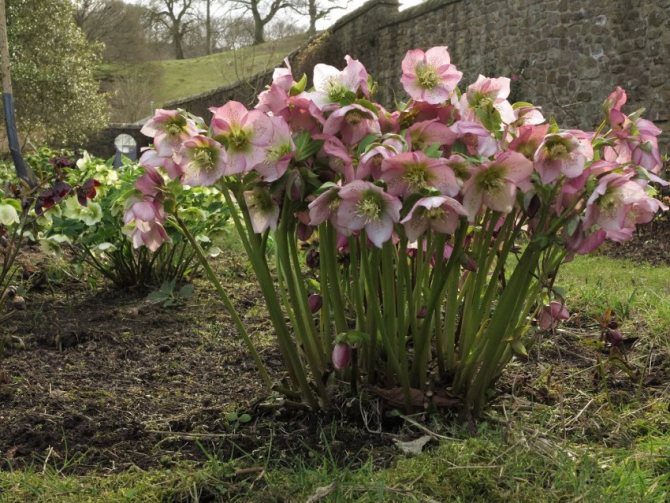

The stem of the hellebore is simple, one might say lightweight, but the rhizome is already more massive and thick. Basal leaves are large and stop-shaped.
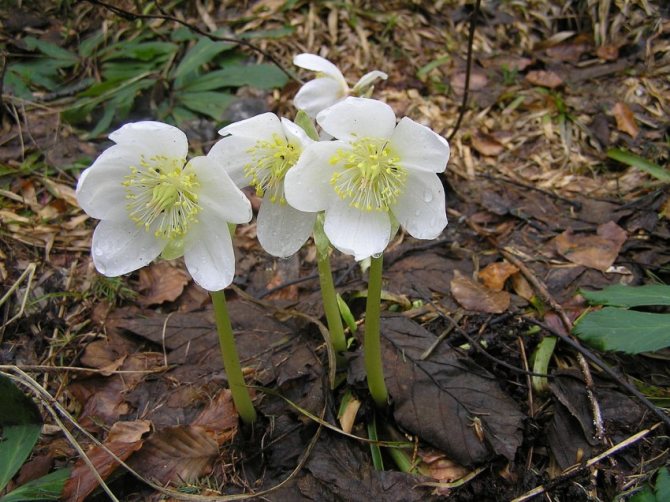

The flowers of the Christmas rose grow cupped, and inside there is a long stalk. They are located at the very top of the stem and bloom widely.
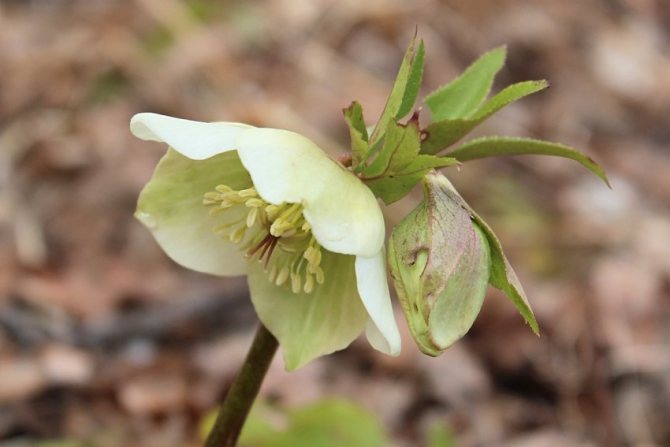

Since the hellebore grows in the wild, its flowering period is associated with the change of seasons, and begins from the end of February until the last days of June, which means there is a large enough window in which you can collect the hellebore flower.
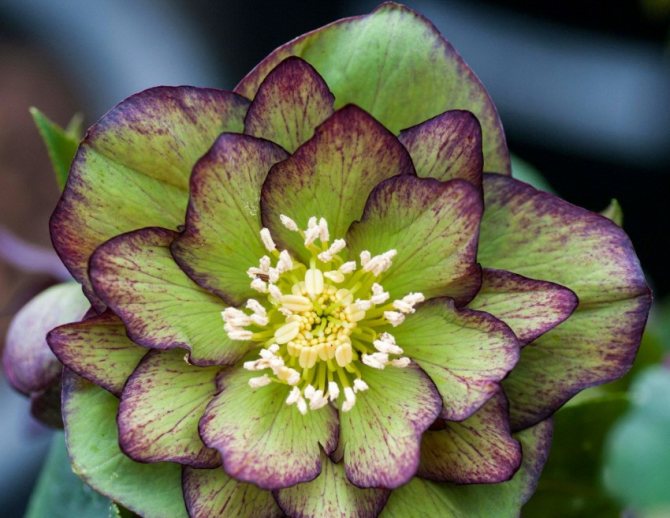

9.Appointment
Beautifully flowering, very showy plant, suitable for cutting. Bouquets hellebore will fill the room with a pleasant aroma. Currently, hellebore can be considered not only as a flowering plant, but also as an ornamental-leaved plant, since its variegated varieties have been bred. This garden flower will be a real decoration for any flower garden or flower bed.
↑ Up,
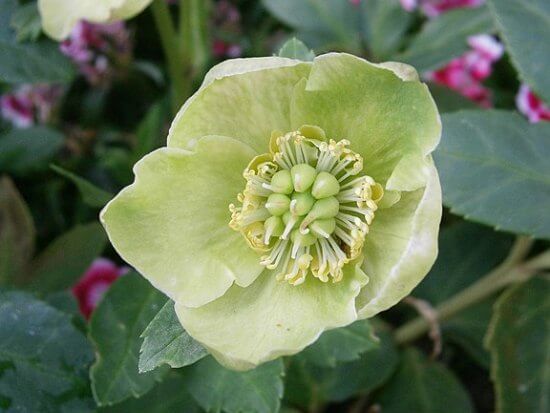

You may also be interested in:
- Crocus - planting and care, flowering, growing in the open field, a description of when to plant, propagation of domestic crocuses by seeds, when and how to transplant
- Mouse hyacinth - photo, planting and care, growing from seeds, description, flowering time, transplanting, keeping at home, composition of soil for growing in a pot, description of varieties, reproduction
- Lily of the valley - photo of the plant, flowering time, description of the flower, where it grows, planting and care in the open ground and at home, the family, what it looks like, description of varieties, use in floristry, keeping in a pot, reproduction
- Snowdrop - photo, flowering time, description - what the plant looks like, species and varieties, keeping at home, planting and care in the open field, reproduction - growing from seeds, medicinal properties
↑ Up,
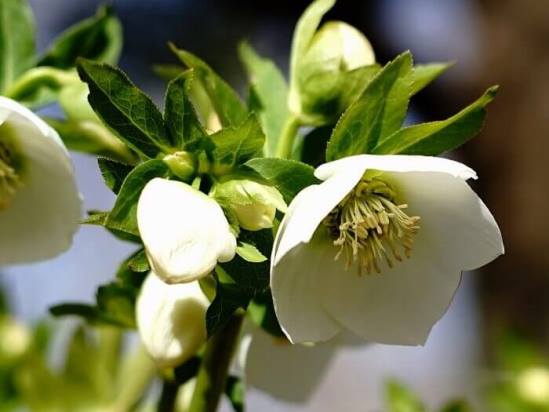

What hellebore and toad have in common
Rhizomes and plant roots contain cardiac glycosides (0.2%), of which the main one is desglycogellebrin (Corelborin K), which is split into rhamnose and gellebrigenin during hydrolysis. The bioside gelleborin (corelborin P) in an amount of 0.2% was isolated from the roots of the reddish hellebore, which is split into aglycone, rhamnose and glucose during hydrolysis. Saponins have also been found.
The cardiac glycosides contained in the hellebore belong to the group of glycosides with a six-membered lactone ring.They are called bufadienolides, since they were first isolated from the venom of toads (Bufo - Latin for toad). They are close to the glycosides of sea onions. Like other cardiac glycosides, they enhance the contractile properties of the myocardium, in addition, they act on the central and peripheral nervous system, on diuresis.
In medicine, hellebore preparations were tried to be used for cardiovascular insufficiency of 2 and 3 degrees. Corelborin K strengthens the cardiovascular system, lengthens diastole, slows the heart rate, increases vascular tone and blood flow rate. In the gastrointestinal tract, it is almost not destroyed. In terms of biological activity, Corelborin P is close to Corelborin K, but less toxic, acts faster and accumulates less.
Currently, hellebore is not used in scientific medicine.
10.Note
All parts of the plant are very poisonous - keep it away from small children and pets. Use protective gloves when handling the hellebore, as the skin may become inflamed and blistered when in contact with fresh plant sap. This flower is great honey plant.
↑ Up,


Hydroponics.
Flower pests and diseases
The wintering area is attacked by the following pests:
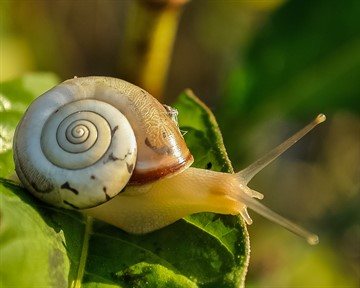

- slugs and snails... They feed on the foliage of the plant. The method of dealing with them is collection by hand;
- mouse... For the purpose of destruction, mousetraps with bait are installed;
- aphid... It does double harm: it feeds on plant juices and is a carrier of a dangerous disease - ring spot. In order to combat, the hellebore is sprayed with the preparations "Biotlin" or "Antitlin";
- hop fineworm caterpillars... They are less common than other pests, feed on the rhizomes of bushes. To combat, use Actellik or a similar drug.
Helleborus is susceptible to the following diseases:
- ring spot. As mentioned, the disease is spread by aphids, therefore it is important to destroy this insect in a timely manner. Ring spot is not treated: the affected shoots and foliage are cut and burned, then the plants and soil are treated with fungicides;
- anthracnose (brown and black spot). Caused by the fungus Coniothyrium Hellebori. The disease manifests itself as black-brown spots on the foliage. The damaged green mass is cut off and burned, then the wintering bushes are treated with copper-based antiseptics;
- downy mildew... The symptoms are as follows: the formation of new foliage stops, and the already grown foliage is deformed, spots appear on it (dark on top, gray on the bottom). Cutting off the diseased parts of the plant, they are sent to the fire, after which the bushes are treated with copper oxychloride or the drug "Previkur".
With proper care and normal growing conditions, Helleborus resists disease quite well. If the plant is constantly sick, you should look for a factor contributing to this. Such, for example, may be the increased acidity of the soil.
The hellebore loses its resistance to disease with a systematic lack of moisture. That is why it is advised to plant it on clayey soil that retains water well.
11. Varieties:
11.1. Caucasian frostbite - Helleborus caucasicus
Very attractive flowering, perennial, herbaceous, low-growing plants with a height of 20 to 30 cm. In warm climates, plants can remain evergreen. Leaves are compound, basal, on long, thin petioles, consist of 5 - 9 oblong segments connected in a circle. The edges of the leaf segments are finely toothed, the surface of the leaf plates is dark green, glossy, the leaf veins are highlighted in a lighter shade. During the flowering period, tall, strong peduncles appear in the center of the leaf rosette, which bear large, cupped, drooping flowers with greenish, yellow, cream or white petals on the tops. Flowers often have a darker center.
↑ Up,
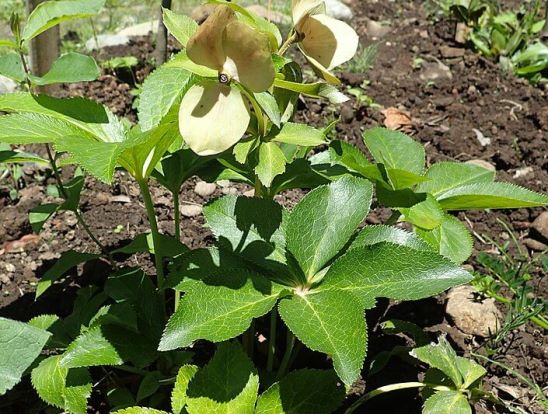

11.2. Oriental frostbite - Helleborus orientalis
Herbaceous plants with a height of 30 to 45 cm.The leaves are dark green, complex, consisting of segments connected in a circle - each leaf has from 7 to 9 oblong segments. The edges of the leaf plates have small denticles. Plants remain evergreen in warm climates. Each bush forms numerous, erect, strong peduncles, at the top of which are attractive cup-shaped flowers with a diameter of 7 to 10 cm.The petals of flowers can be painted in white, cream, greenish, pink, purple and even almost black shades.
↑ Upward,
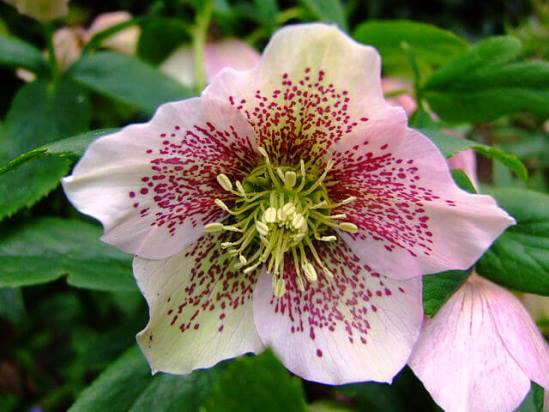

11.3. Black roaster - Helleborus niger
Perennial herb 20 to 60 cm high. Leaves are dark green, compound, on long petioles. Each leaf can consist of 7 - 9 finely toothed, oblong segments. Peduncles are low, erect, reaching a height of 8 - 20 cm. The flowers are cup-shaped, with five wide petals and numerous golden-yellow stamens in the center. Plants with white flowers are most common, but individual bushes may have pink, greenish, creamy flowers.
↑ Upward,
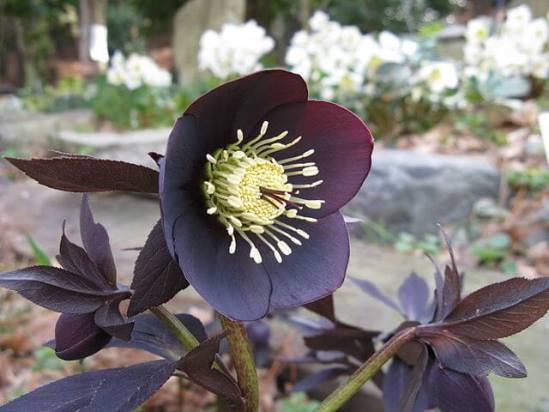

11.4. Abkhazian frostbite - Helleborus abchasicus
Compact herbaceous flowering plants, reaching a height of 30 - 45 cm. They have basal complex leaves on long petioles, consisting of 7 - 9 leafy, finely toothed segments of dark green color. During the flowering period, the plants throw up erect, strong peduncles, each bearing from 1 to 4 drooping, pinkish or lilac flowers.
↑ Upward,
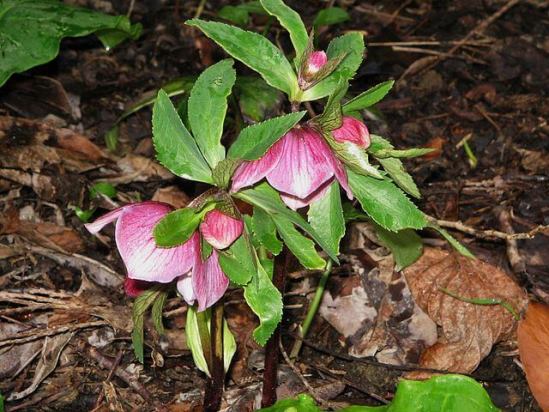

11.5. Stinking freebird - Helleborus foetidus
Quite tall species - bushes can reach 60 cm in height. It is an evergreen in warm climates, a perennial plant with dark, complex, leaves on long basal petioles. The leaf blades are glossy, very narrow, lanceolate, sometimes bluish. When damaged, the leaves emit an unpleasant odor, which is why the plant received this name. The flowers are greenish-white, small, drooping, collected in inflorescences on the tops of erect, strong peduncles.
You may also be interested in:
- Date palm at home - care, how to grow from a stone, photo, fruiting when growing in a pot, transplant, why the plant turns yellow and dries, description - what a palm tree looks like, watering
- Alyssum - photo of a flower, planting and care in the open field, growing from seeds, keeping a plant in a pots - soil, fertilizer, lighting
- Hamedorea - photo of a palm tree, home care, transplantation, causes of leaves drying, signs associated with indoor plants, reproduction, growing from seeds, diseases and pests, conditions of detention after purchase
- Violet - photo and description of varieties, home care, flowering time, watering indoor violets, reproduction, why plants do not bloom, how to transplant a flower, diseases and pests
- Croton - photo, home care, flower reproduction, plant types, signs, codiaum flowering time, propagation by cuttings, pruning, why croton dries and leaves fall, transplant
↑ Upward,
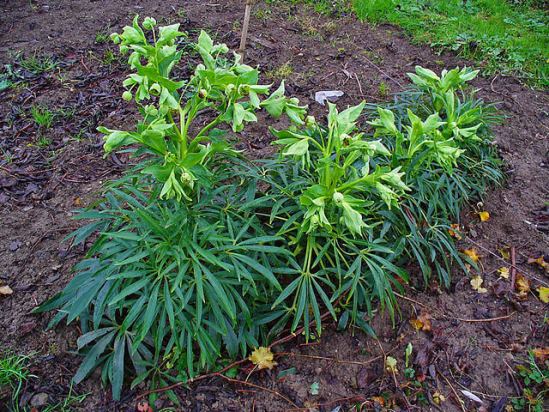

Blooming hellebore
The hellebore bloom lasts 3 weeks. Flowers come in a wide variety of colors. In the more common species of hellebore, the flowers are monochromatic, and in rare types, the shades are unusual, variegated. In the garden varieties of hellebore, flowers are often pinkish, creamy or deep red in color.
![Hellebore flower [photo, description, planting and care]](https://bgn.imadeself.com/wp-content/uploads/cvetok-moroznik-foto-opisanie-posadka-i-uhod.jpg)
![Hellebore flower [photo, description, planting and care]](https://bgn.imadeself.com/wp-content/uploads/cvetok-moroznik-foto-opisanie-posadka-i-uhod.jpg)
Each hellebore flower includes a calyx and petals that attract florists. The petals are shaped like tiny funnels. It is through them that nectar is released. Each flower also has thin pistils and stamens.
The flowering period of the hellebore gradually flows into the fruiting phase. But the plant does not lose its attractiveness: the flowers do not fade, their cups gradually turn green, the funnels and stamens disappear, and the pistils grow slightly, forming a bunch of flat fruits called leaflets.
The hellebore flower keeps its shape very well and for a long time. The calyx does not shrink even after the leaflets are opened, and black seeds spill out of them.
The hellebore flower is ideal for the garden, it grows well under trees of different heights, and next to shrubs.

